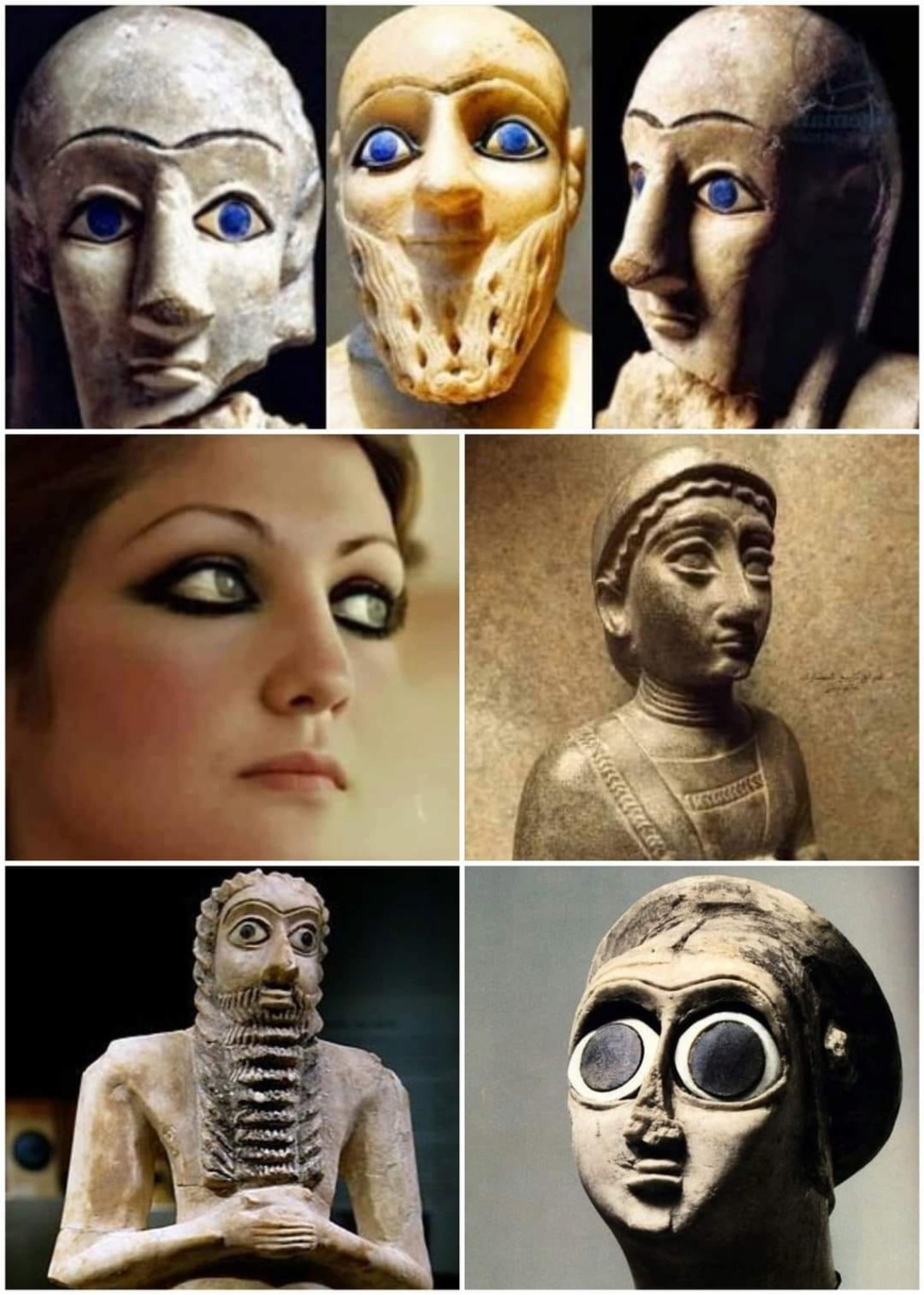Mysterious Sumerian statues with big blue eyes

Large eyes are a common feature in all Sumerian statues, a fact supported by reality in the image of Iraqi women with Sumerian roots.
The Sumerians carved many ancient statues of creatures with very large, blue eyes. Then they placed these ancient statues in the temples on top of the ziggurats. It seems clear that the sculptural symbolism of these eyes was very important to our Sumerian ancestors
?What were the features of the Sumerians
Archaeologist Jane Shooter says that excavations of several Sumerian cemeteries contain skeletons. It showed that the Sumerians were short and of solid build. They had thin lips, delicate noses, and eyes that turned downward. They had dark skin, black eyes, and dark hair. The Sumerians also referred to themselves as "the dark-haired people."
Blue eyes were a sign of the gods
Scientists at the University of Copenhagen in Denmark have tracked down a genetic mutation, which occurred 6,000-10,000 years ago, and is the cause of blue eye color for all humans on planet Earth today. So it is possible that some Sumerians had blue eyes, but if this is the case it is unlikely that they were many.
Like many other ancient civilizations, the Sumerians considered blue eyes to be a sign of the gods.
Ancient Sumerian statues with big blue eyes have a symbolic meaning. Each of these statues is different. Faces and clothes are not alike. This means that the statues were not created to represent one important individual, but many different people.
According to Irene Winter at Columbia University in New York, “The large, staring eyes carved into Mesopotamian votive statues were often seen as a distinctive stylistic feature, giving the impression that their function was to indicate attention toward the object they were supposedly staring at.” , It is known that these statues were placed in shrines, either in a sitting position inside their chapels or standing in direct contact with the protective deity of that Sumerian city.
Source: websites

